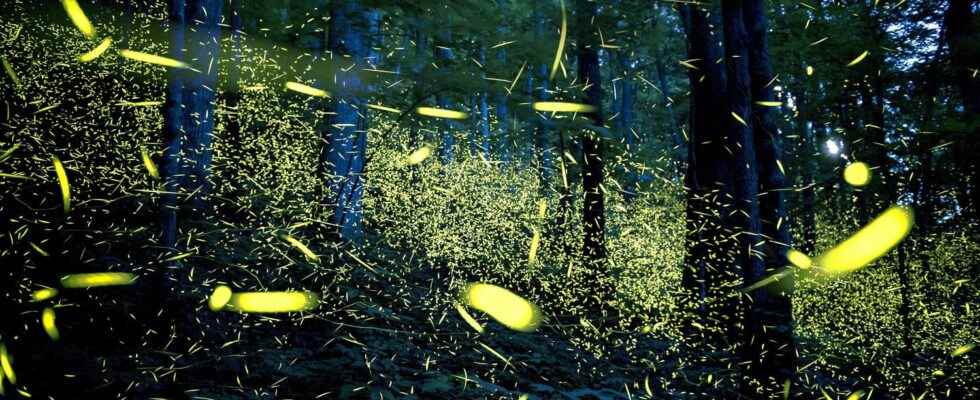The firefly is one of those luminescent animals that blinks when they are ready to mate (this is the difference with the glowworm that you may see at night, which also lights up… but continuously!) The male firefly is therefore in flight, in courtship and its abdomen emits small, very brief flashes of light thanks to a chemical reaction. On the ground, the female spots him and if she leaves, she also blinks. It’s their only way to find each other – they don’t have a pheromone or color to recognize.
All of this works perfectly, except when artificial light interferes with the operation, according to this study published by Royal Society Open Science and conducted by two researchers from Tufts University in Massachusetts.
They simply prove it by creating lures, attracting them with flashlights, and LED bulbs of different intensities. They conducted the experiment on the edge of the forest, in the evening. Result: 28 out of 29 males got tricked and went to the fake females on the ground to lure them into the dark. Rebelote in a field with 34 males and 34 females of another variety of “Photinus” (learned name of the firefly). When the light was on (even very dim), the couples had a much harder time locating each other than when they were left in the dark.
In the laboratory, it is also spectacular: direct exposure to artificial light completely prevented 100% mating in a semi-nocturnal Photinus species. While at natural twilight or low light: 45% of pairs succeeded.
According to the two researchers, this explains why among the 2,000 fireflies listed in the world, some are threatened with extinction and not others. So the idea is to continue research locally and not just for fireflies: half of the habitable earth surface is now lit by artificially bright skies. And almost everywhere, we see that moths are exhausted by dint of circling around lampposts, that migrating seabirds collide with headlights or that deer are knocked down by cars attracted by the light.
In France, the environment code has governed public lighting for several years under the responsibility of mayors and prefects. Article L.583-1: “Artificial light must be suppressed or limited in the event of danger or excessive disturbance 1. To people, 2. To fauna, flora 3. To ecosystems.” For fireflies, we now know that there is excessive trouble!
